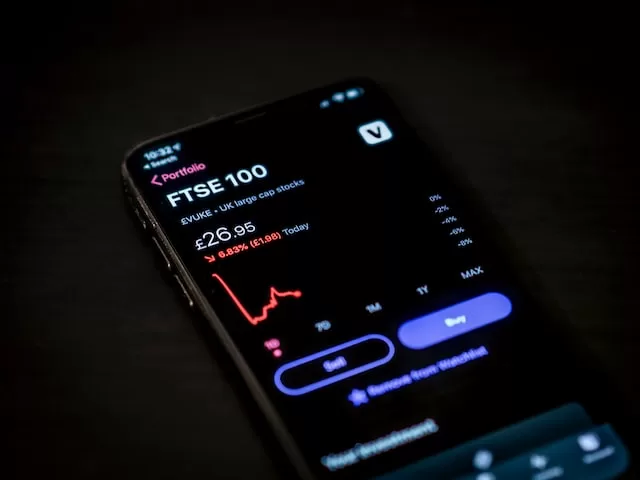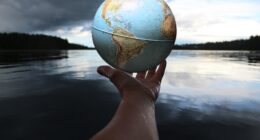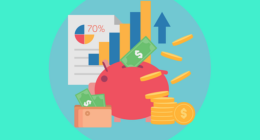Stagflation is a term used to describe a period of high inflation and high unemployment. It’s the opposite of what you would expect in a healthy economy, which is low inflation and low unemployment. A recession is a period when the economy contracts and GDP (gross domestic product) decreases. This usually happens when there is a decrease in consumer spending. While stagflation and recession both involve economic hardship, they are different in that stagflation occurs when prices are rising and unemployment is high, while recession happens when GDP is decreasing and unemployment is also rising.
What is stagflation?
Stagflation is a term used to describe periods of high inflation and slow economic growth, or stagnation. It’s a situation in which the economy isn’t growing, but prices are still rising. This can be caused by an increase in the cost of raw materials or a decrease in the supply of money.
Slow economic growth combined with high inflation can be very damaging to an economy. It can lead to widespread unemployment and underemployment, as well as reduce people’s purchasing power.
There are two main ways to try and combat stagflation: through fiscal policy (e.g. tax cuts or spending increases) or monetary policy (e.g. interest rate cuts).
What is a recession?
A recession is a significant decline in economic activity spread across the economy, lasting more than a few months. It is visible in industrial production, employment, real income and other indicators. A recession begins when the economy reaches a peak of activity and ends when the economy reaches its trough. Between those two points, there is a period of declining economic activity.
In the United States, a recession is typically defined as two consecutive quarters of negative economic growth as measured by Gross Domestic Product (GDP).
The causes of stagflation
There are a few different schools of thought when it comes to what causes stagflation. The most popular theory is that it is caused by a combination of high unemployment and high inflation. This theory suggests that when unemployment is high, there is less spending in the economy. This decrease in spending can lead to higher prices, which leads to inflation. When inflation is combined with high unemployment, it can create a situation of stagflation.
Another theory suggests that stagflation can be caused by an increase in the money supply. This theory suggests that when there is more money in circulation, it can lead to higher prices without an increase in economic activity. This can eventually lead to stagnation as well as inflation.
Finally, some economists believe that stagflation can be caused by a decrease in aggregate demand. This means that there is less demand for goods and services in the economy overall. This can lead to both higher unemployment and higher inflation as businesses cut back on production and workers are laid off.
No matter what the cause of stagflation may be, it can have detrimental effects on an economy. It can lead to lower growth rates, higher unemployment, and decreased living standards. That is why it is important to try to avoid or mitigate the causes of stagflation so that economies can stay strong and healthy.
The effects of stagflation
The effects of stagflation can be severe. High inflation rates can lead to higher interest rates, which can make it difficult for businesses to get loans and invest in new projects. This can lead to a decrease in economic growth and an increase in unemployment. In addition, high inflation can erode the value of savings and retirement accounts.
The causes of recession
There are many causes of recession, but the most common ones are:
-Lack of aggregate demand: This can be caused by households and firms cutting back on spending due to uncertainty about the future. It can also be caused by a decrease in exports or an increase in imports.
-Decrease in investment: This can be due to businesses perceiving that there is less demand for their products, so they cut back on investment spending. It can also be caused by a decrease in the availability of credit.
-Increase in government spending: While this may seem like an unlikely cause of the recession, it can lead to a decrease in private sector spending as businesses anticipate higher taxes to pay for the increased government spending.
-Natural disasters: A major hurricane or earthquake can disrupt production and lead to a decrease in demand for goods and services, causing a recession.
The effects of the recession
There are two main types of economic recessions: supply-side and demand-side.
Supply-side recessions are caused by a decrease in the production of goods and services. This can be due to a natural disaster, like a hurricane, or an increase in the cost of inputs, like oil.
Demand-side recessions are caused by a decrease in consumer spending. This can be due to a loss of confidence in the economy, or an increase in interest rates.
Recessions can have different effects on different sectors of the economy. For example, manufacturing is usually more affected by supply-side recessions, while retail is more affected by demand-side recessions.
The most common effect of a recession is that businesses lose money and have to lay off workers. This can lead to a decrease in consumer spending, which can then lead to even more job losses. As job losses mount, so does the pressure on families – they may have to cut back on discretionary spendings, like vacations or new clothes. This can further harm businesses and perpetuate the cycle of job losses and decreased consumer spending.
A recession can also cause an increase in crime as people become desperate for money. It can lead to an increase in government debt as the government tries to stimulate the economy with stimulus programs like tax cuts or increased government spending.
How to combat stagflation and recession?
When an economy is in a recession, it is generally characterized by low economic growth, high unemployment, and low inflation. In contrast, stagflation is an economic climate in which there is high inflation and high unemployment. While recessionary economies typically call for Keynesian policies that seek to spur economic growth through government spending and lower interest rates, stagflationary economies may instead require austerity measures that aim to reduce government spending and raise taxes.
There are several ways to combat stagflation and recession. One way is to increase government spending on infrastructure and other projects that can help stimulate the economy. Another way is to reduce interest rates so that businesses can borrow money more cheaply and invest in expansion. Finally, tax cuts can also be used as a tool to help boost economic activity.
Which is worse: recession or stagflation?
Given the current state of the economy, it’s a tough call to make. On one hand, recessionary conditions can lead to widespread layoffs and a decrease in spending power for consumers. This can have a ripple effect throughout the economy, leading to further decline.
On the other hand, stagflation is characterized by high inflation and low economic growth. This can be just as detrimental to an economy, as it can lead to higher costs of living and decreased purchasing power.
So which is worse? It depends on the individual situation. If you’re facing unemployment or underemployment, then a recession may be more difficult to weather. However, if you’re retired or on a fixed income, then stagflation could pose a greater threat.
Where do you put your money in stagflation?
When stagflation occurs, it can be difficult to know where to put your money. In general, you want to avoid investments that are likely to lose value or that will not keep up with inflation.
Cash is often the best option during stagflation, as it retains its value and can be used to purchase goods and services that may become more expensive due to inflation. Short-term government bonds are another option, as they are typically less volatile than stocks and other types of investments.
You may also want to consider investing in real estate or commodities, as these can sometimes hold their value better during periods of inflation. However, these investments can be riskier than cash or government bonds, so you should only invest if you are comfortable with the risks involved.
Does real estate do well in stagflation?
For businesses, it can be hard to keep up with rising costs while also trying to grow revenue. And for consumers, it can be tough to make ends meet when prices are going up but wages aren’t keeping pace. Despite the challenges that come with stagflation, some sectors tend to do well during these periods. One of those sectors is real estate.
Historically, real estate has been a fairly stable investment during times of economic turmoil. That’s because people will always need a place to live, no matter what’s happening in the broader economy.
Of course, there are no guarantees in life (or investing), but if you’re looking for a place to park your money during a stagflationary period, real estate is worth considering.
What assets do well during stagflation?
There are a few different types of assets that do well during stagflation:
1. Gold and other precious metals: these have traditionally been seen as a safe haven during times of economic turmoil, and their prices often go up when inflation is high.
2. Real estate: while prices may fluctuate in the short-term, over the long-term real estate tends to appreciate, especially if there is population growth. This makes it a good investment during stagflation.
3. Collectibles: whether it’s art, coins, or stamps, collectables can be a good way to preserve your wealth during stagflation. This is because they are not subject to the same forces of supply and demand as other assets, and their prices can continue to rise even when the economy is struggling.
What happens to the stock market during stagflation?
The stock market usually responds negatively to stagflation, since investors are uncertain about the future of the economy.
Photo by Jamie Street on Unsplash









